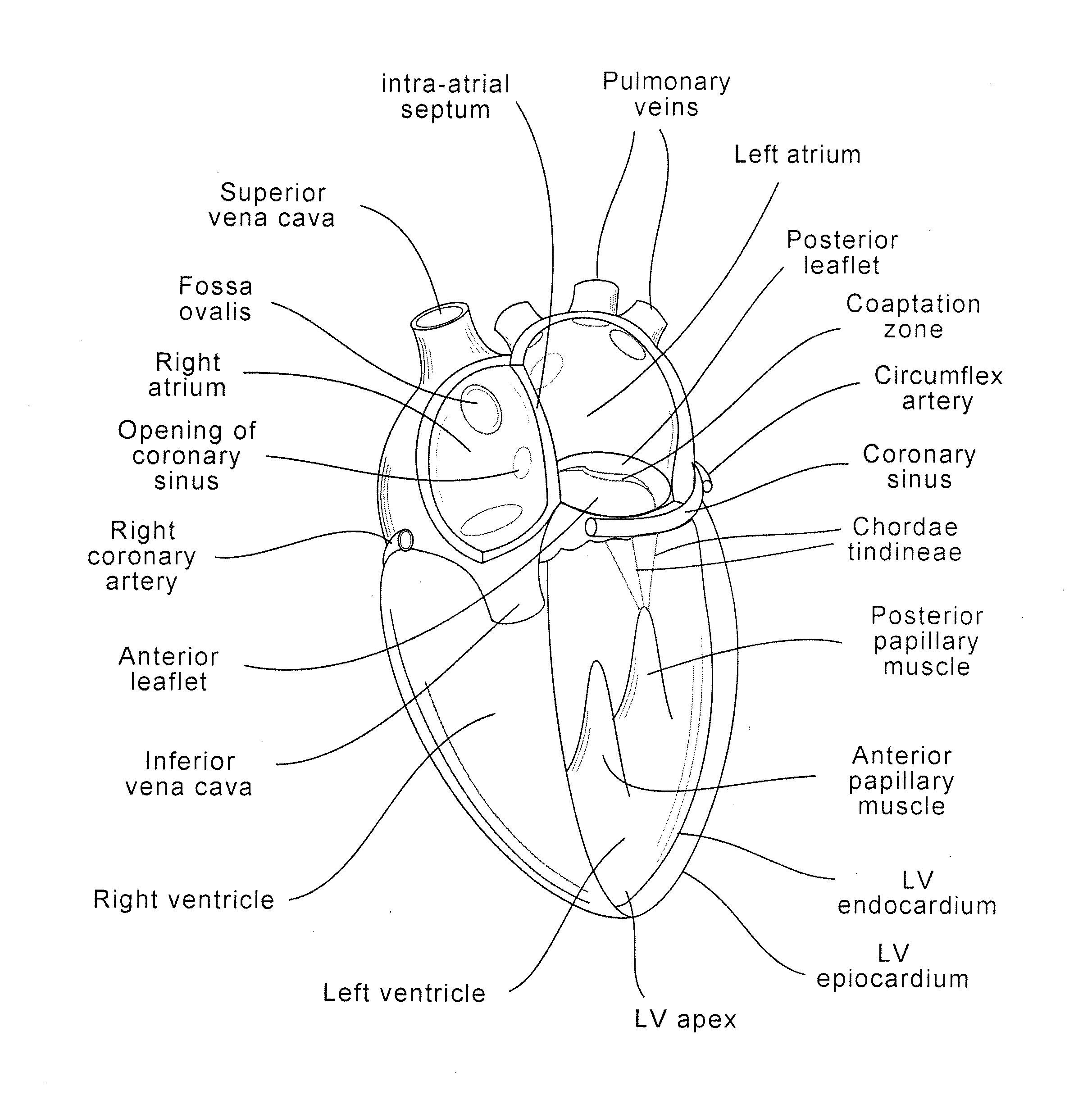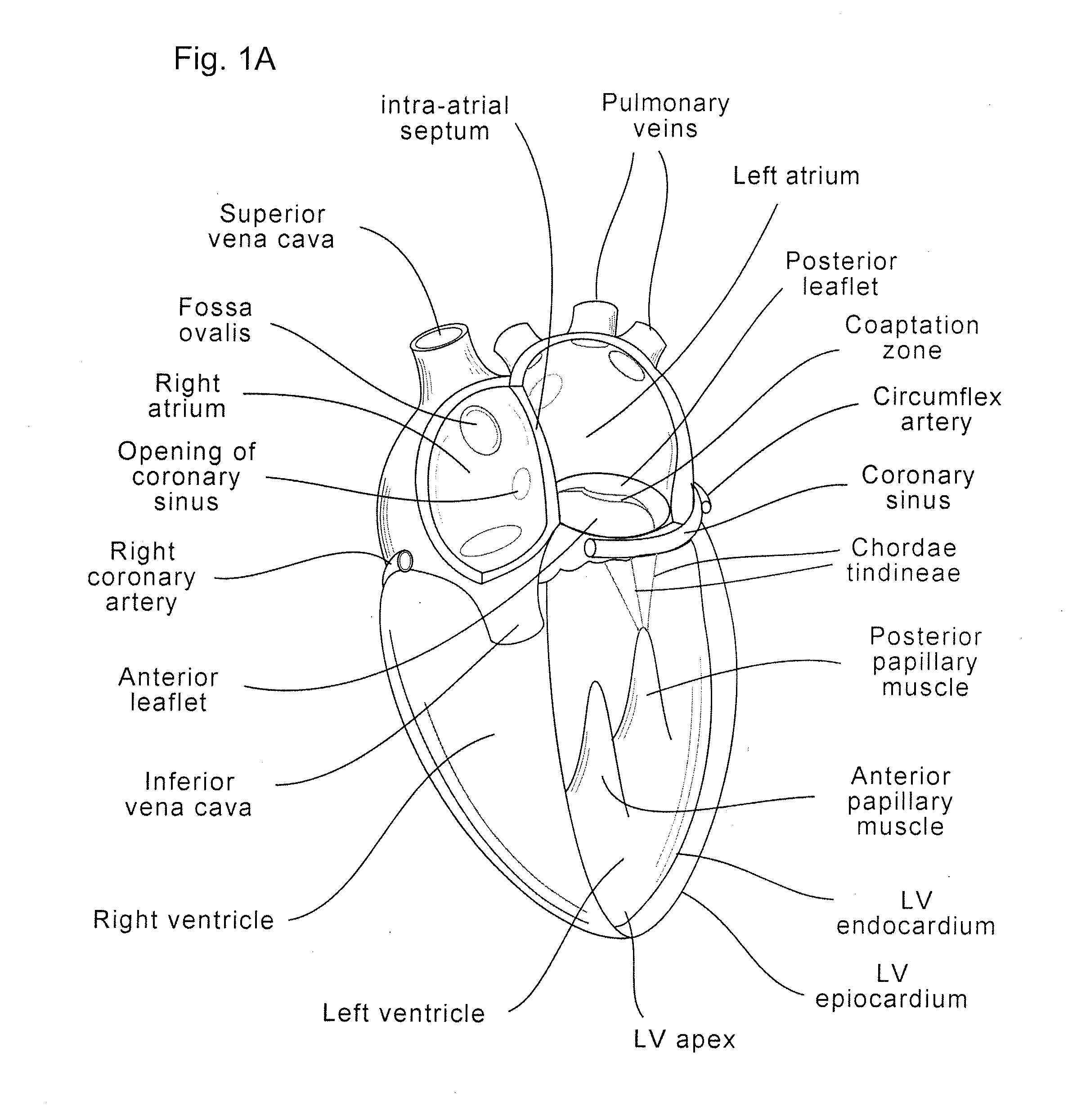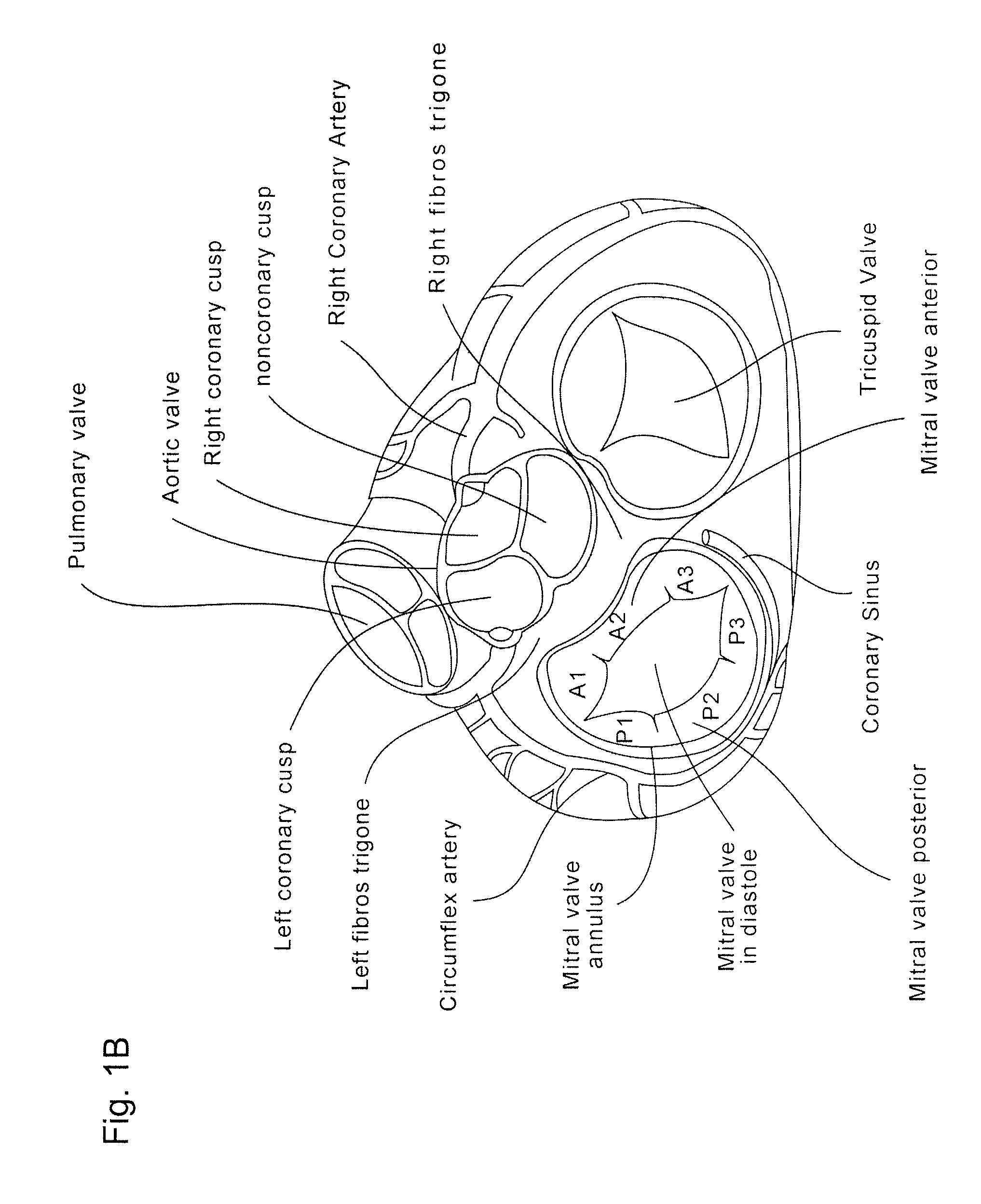Coaptation enhancement implant, system, and method
a technology of coaptation and implant, applied in the field of improved medical devices, systems and methods, can solve the problems of decreased blood flow, increased risk of cardiac failure, and increased risk of cardiac failure, and achieve the effect of reducing mal-coaptation and improving valve function
- Summary
- Abstract
- Description
- Claims
- Application Information
AI Technical Summary
Benefits of technology
Problems solved by technology
Method used
Image
Examples
Embodiment Construction
[0059]The present invention generally provides improved medical devices, systems, and methods, often for treatment of mitral valve regurgitation and other valve diseases. The implants described herein will generally include a coaptation assist body (sometimes referred to herein as a valve body) which is within the blood flow path as the leaflets of the valve move back and forth between an open-valve configuration (with the leaflets separated from valve body) and a closed-valve configuration (with the leaflets engaging opposed surfaces of the valve body). The valve body may structurally float or move within the annulus of the valve during beating of the heart, and will be disposed between the native leaflets to fill gaps between the coapting leaflet surfaces. Those gaps may be lateral (such as may be caused by a dilated left ventricle and / or mitral valve annulus) and / or axial (such as where one leaflet prolapses or is pushed by fluid pressure beyond the annulus when the valve should ...
PUM
 Login to View More
Login to View More Abstract
Description
Claims
Application Information
 Login to View More
Login to View More - R&D
- Intellectual Property
- Life Sciences
- Materials
- Tech Scout
- Unparalleled Data Quality
- Higher Quality Content
- 60% Fewer Hallucinations
Browse by: Latest US Patents, China's latest patents, Technical Efficacy Thesaurus, Application Domain, Technology Topic, Popular Technical Reports.
© 2025 PatSnap. All rights reserved.Legal|Privacy policy|Modern Slavery Act Transparency Statement|Sitemap|About US| Contact US: help@patsnap.com



